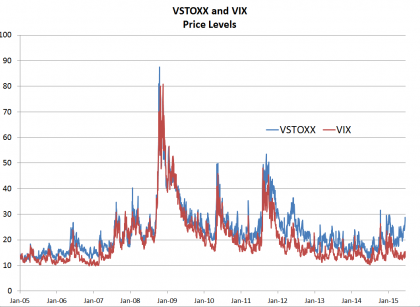The yield-to-worst of the S&P/BGCantor Current 10 Year U.S. Treasury Index ended the week on Friday, June 19, 2015, 12 bps lower, at 2.26%. Concerns over Greek debt financing with the European Union led investors to the safety of U.S. Treasuries. Up to that Friday, the index had returned -1.11% MTD, recovering a bit after losing as much as 3.13% MTD as of June 10, 2015. Year-to-date, the index has returned 0.48%. The U.S. 10-year Treasury bond yield started this week higher (on June 22, 2015) at 2.3%, as a new proposal by Greek Prime Minister Alexis Tsipras has put the negotiations back on track and given optimism to an eventual settlement before the June 30, 2015, deadline.
The pickup in Treasuries last week also helped corporate bonds, as the yield-to-worst of the S&P U.S. Investment Grade Corporate Bond Index moved lower last week by 6 bps, half of the movement by Treasuries. The pace of issuance has increased since May, as issuance continued throughout the week, with notable names such as Baxalta (USD 5 billion), Cardinal Health (USD 1.5 billion), Energy Transfer (USD 3 billion), IBRD (USD 3.5 billion), SoCal Gas (USD 600 million), and Union Pacific (USD 700 million) coming to market. The index recouped its losses throughout the week and closed June 19, 2015, returning -1.2% MTD and -0.11% YTD.
Like the investment-grade index, the yield-to-worst of the S&P U.S. High Yield Corporate Bond Index moved lower by 5 bps to 6.41% for the week, as of June 19, 2015. The slight improvement in performance did not curb the outflows from high-yield funds that continued, as the third week of June outpaced the prior two. The past two weeks had seen a total of USD 5.5 billion of outflow. The index was returning -0.92% MTD and 3.85% YTD this past Friday.
Following in the shadow of its credit cousin, the S&P/LSTA U.S. Leveraged Loan 100 Index had lost 0.63% MTD, while returning 2.0% YTD as of June 21, 2015. Continued volatility and fund outflow in high-yield bonds and modest outflows from loan funds have contributed to the index’s current weakness. The yield-to-maturity of the index was 4.96% on the same date, up 15 basis points from the beginning of the month’s 4.81%.
The posts on this blog are opinions, not advice. Please read our Disclaimers.











